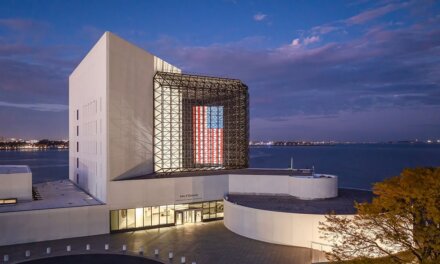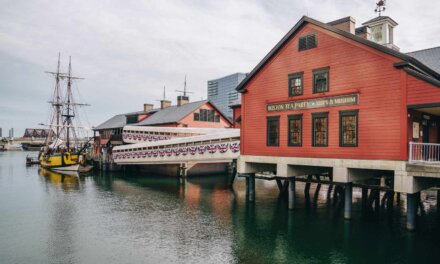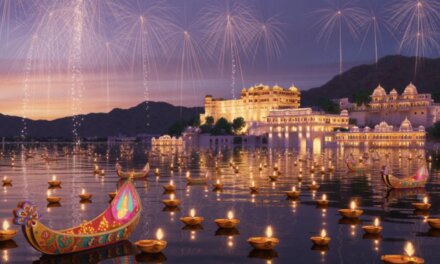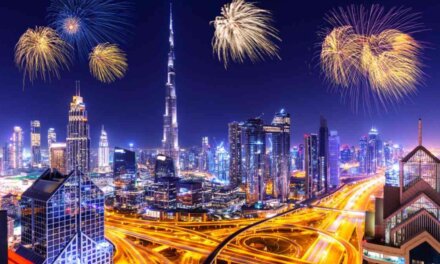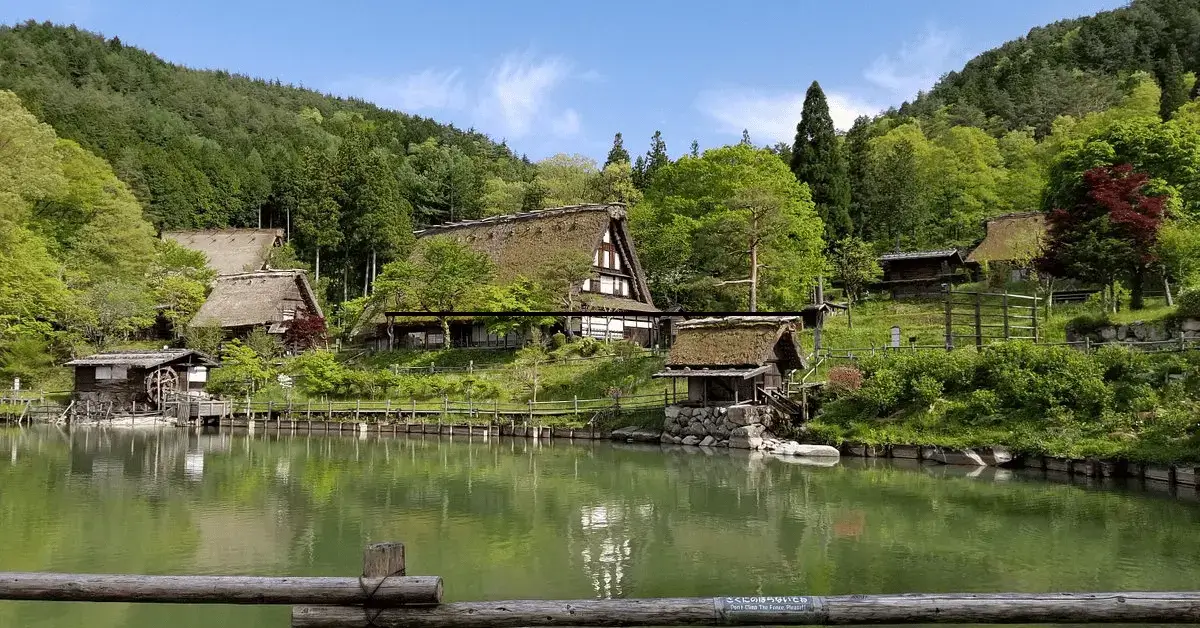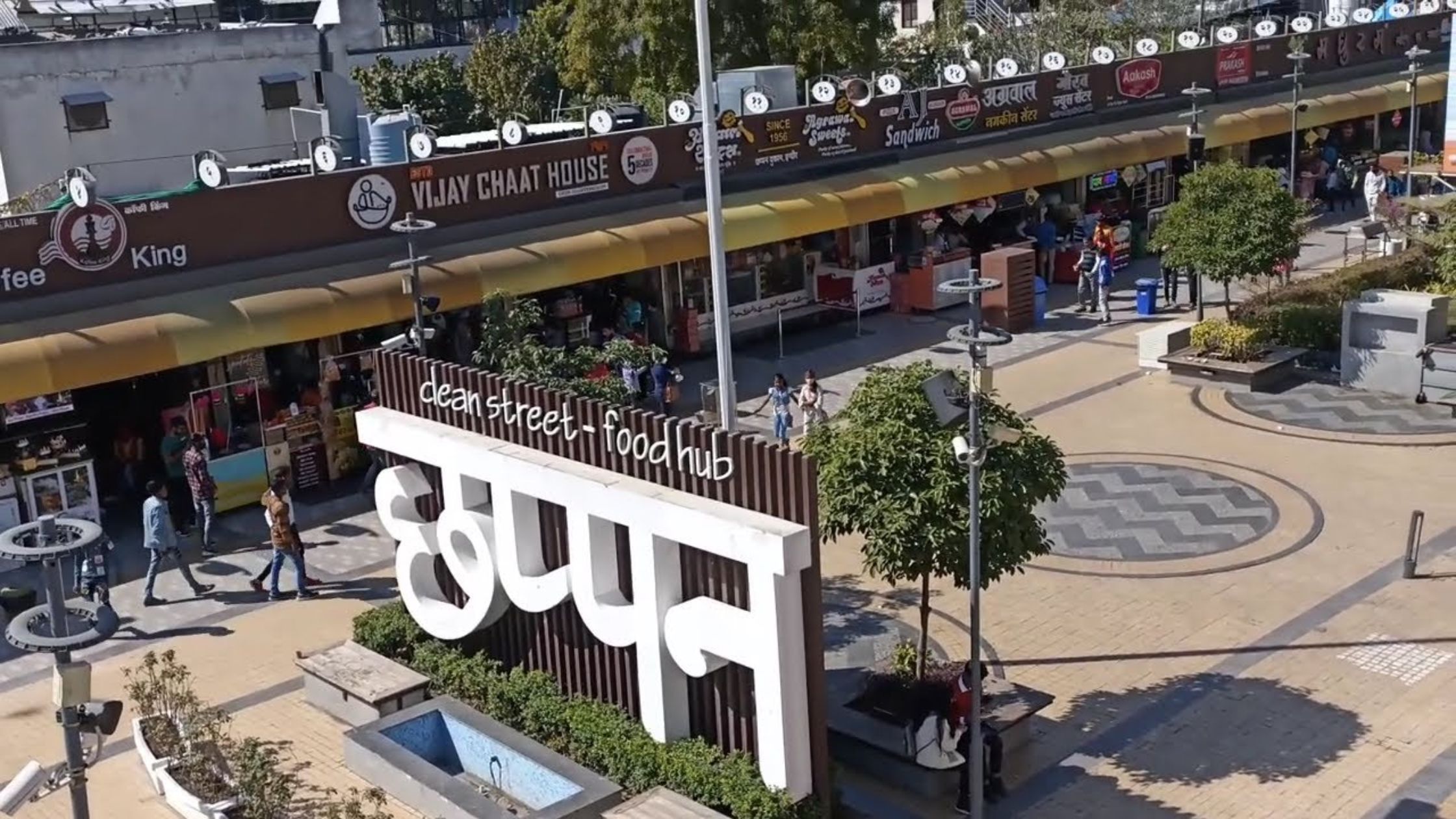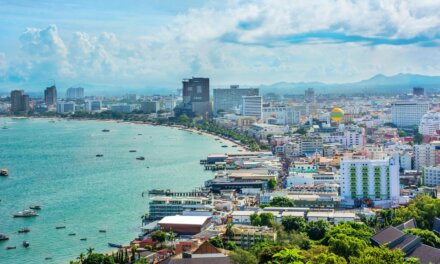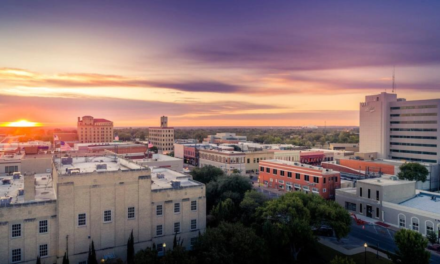
Khajrana Ganesh Mandir – Discover the Divine Charm and Spiritual Bliss
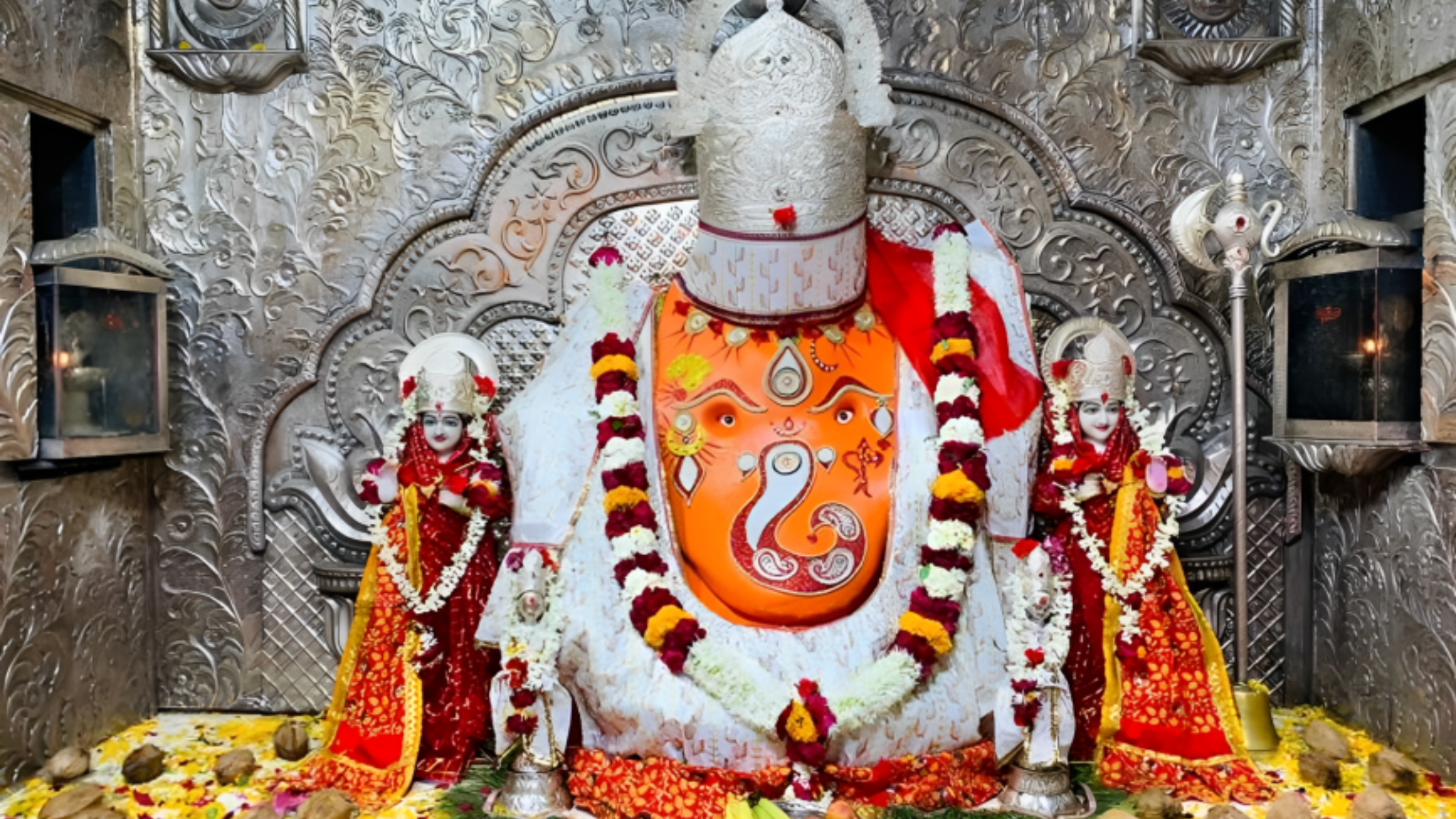
Introduction
Khajrana Ganesh Mandir in Indore is one of the most beloved sacred spaces, visited annually by thousands of devotees who come here to pray to Ganesha in order to have all their wishes granted by him. Many believe that by worshipping Ganesh in Indore they can get all their wishes granted by him!
Table of Contents
- Introduction
- History Of Khajrana Ganesh Mandir, Indore
- Basic Details Of Khajrana Ganesh Mandir
- Significance of Khajrana Mandir
- Architecture and Design
- Mythological Legends and Stories
- Religious Practices and Rituals
- World’s Most Expensive Prasad Shop
- How To Book VIP Darshan
- Nearby Attractions and Tourist Information
- How to Reach Khajrana Ganesh Mandir
- Khajrana Ganesh Mandir (Temple) Distance From Various Landmarks In Indore
- Best Time to Visit Khajrana Mandir
- Accommodation Options
- Safety Tips for Visitors At Khajrana Ganesh Mandir
- Local Cuisine and Food Options
- Souvenirs and Shopping
History Of Khajrana Ganesh Mandir, Indore
The Khajrana Ganesh Mandir in Indore is a renowned Hindu temple with a rich history.
- The temple is believed to have been established around 1735-1736 by Rani Ahilyabai Holkar, the ruler of Indore.
- According to local legends, the idol of Lord Ganesh was found buried at the present-day site of the temple during the construction of a well by a contractor named Krishnaji Gangadhar.
- It is said that the contractor had a recurring dream in which Lord Ganesh appeared and instructed him to retrieve the buried idol and build a temple dedicated to him at the site.
- Following the dream, the idol was discovered, and Rani Ahilyabai Holkar was informed about the incident.
- Recognizing the significance of the idol, Rani Ahilyabai Holkar ordered the construction of the Khajrana Ganesh Mandir.
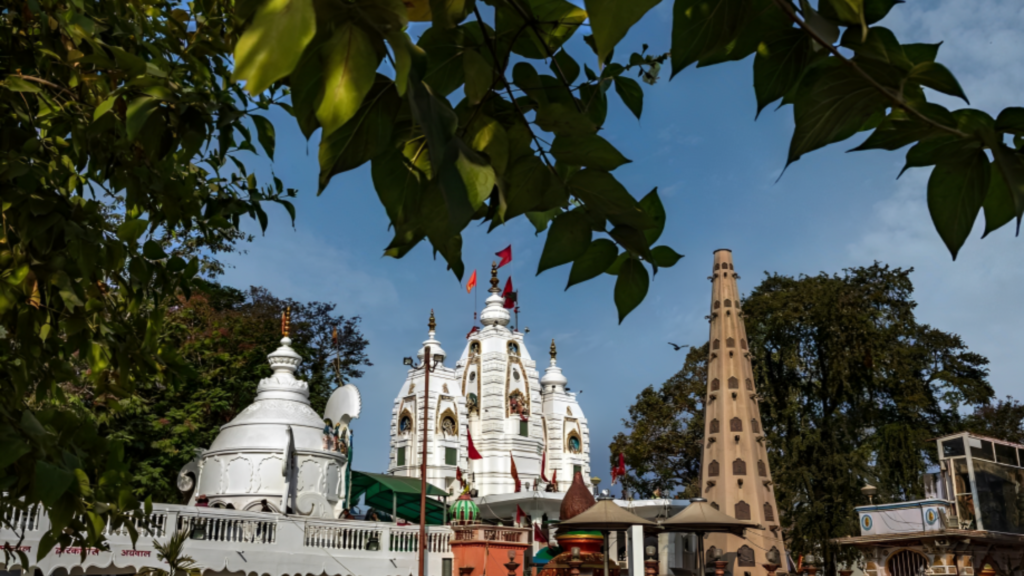
Basic Details Of Khajrana Ganesh Mandir
| Temple Name | Khajrana Mandir |
|---|---|
| Deity | Lord Ganesha |
| Significance | Revered as the elephant-headed god of wisdom and prosperity |
| Location | Indore, Madhya Pradesh, India |
| Distance | Approximately 8 kilometers from Indore city center |
| Historical Origins | Established in the early 18th century (exact details unclear) |
| Religious Significance | Holds religious significance for the people of Indore |
| Idol | Massive limestone idol of Lord Ganesha Height: Approximately 25 feet |
| Decorations | Adorned with various ornaments |
| Festivals | Receives extensive decorations during festivals and occasions |
Please note that if you require more detailed or specific historical information about the Khajrana Mandir, it is advisable to consult local sources, and religious texts, or visit the Mandir itself to learn about its historical significance and development.
Significance of Khajrana Mandir
The Khajrana Mandir holds significant religious and cultural importance for the people of Indore and the devotees of Lord Ganesha. Here are some key aspects of the Mandir’s significance:
Reverence for Lord Ganesha: The Khajrana Mandir is dedicated to Lord Ganesha, who is one of the most widely worshipped deities in Hinduism. Lord Ganesha is revered as the remover of obstacles, the patron of intellect and wisdom, and the harbinger of good fortune and prosperity. Devotees visit the Khajrana Mandir to seek blessings, offer prayers, and express their devotion to Lord Ganesha.
Historical and Cultural Heritage: While specific historical details may be limited, the Khajrana Mandir has been a prominent religious site in Indore for several decades. It has become an integral part of the city’s cultural heritage and holds sentimental value for the local community.
Spiritual Pilgrimage: The Mandir attracts a significant number of devotees, both from within Indore and from other parts of India. Many people undertake a spiritual pilgrimage to the Khajrana Mandir to seek solace, blessings, and guidance from Lord Ganesha. The Mandir’s serene atmosphere and the belief in the deity’s benevolence make it a popular destination for spiritual seekers.
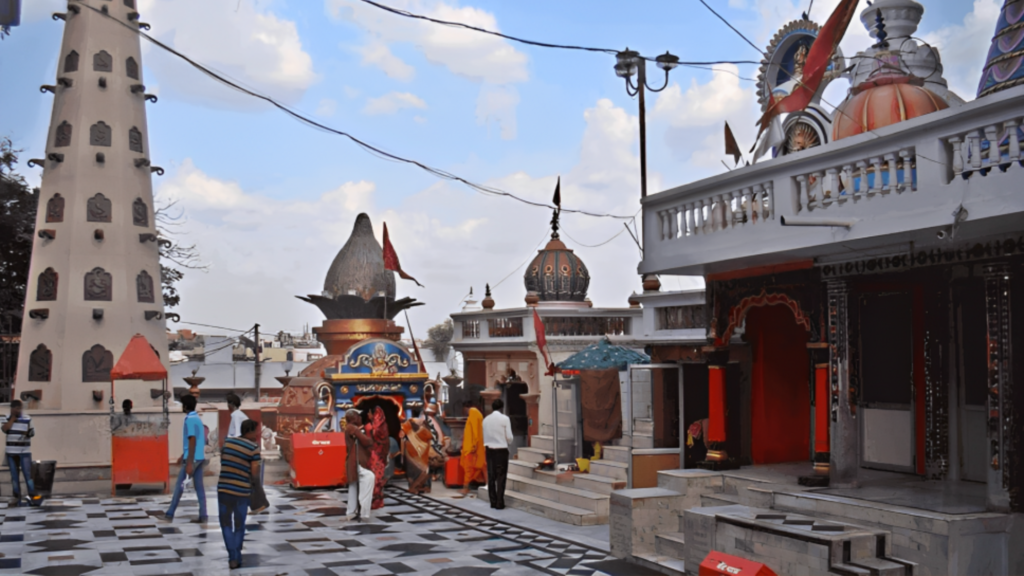
Festivals and Celebrations: The Khajrana Mandir witnesses grand celebrations during festivals dedicated to Lord Ganesha, most notably Ganesh Chaturthi. During these festivals, the Mandir is adorned with elaborate decorations, and special rituals and ceremonies take place. The atmosphere is filled with devotion, joy, and religious fervor as devotees come together to celebrate the auspicious occasions.
Symbol of Unity: The Khajrana Mandir serves as a unifying force among people of various backgrounds and beliefs. It welcomes devotees from all walks of life, regardless of caste, creed, or social status. The Mandir provides a common platform for individuals to come together, share their faith, and foster a sense of unity and harmony.
Architecture and Design
Blessings and Fulfillment of Desires: Devotees offer prayers and make wishes to Lord Ganesha at the Khajrana Mandir. It is believed that sincere devotion and offerings made with a pure heart can lead to the fulfillment of desires and the resolution of difficulties and challenges.
The Khajrana Mandir exhibits a distinct architectural style and design that reflects traditional Indian Mandir architecture. Here are some features of its architecture and design:
Entrance and Gateways: The Mandir complex features a grand entrance or gateway that marks the transition from the outside world to the sacred space of the Mandir. These gateways, known as “toranas” in Indian architecture, are often adorned with intricate carvings and sculptures depicting various mythological and religious motifs.
Temple Structure: The main Mandir structure at Khajrana Mandir is typically constructed using stone or brick. It follows the traditional North Indian architectural style, characterized by a spire-like tower called a “shikhara” that rises above the main sanctum. The shikhara is often adorned with ornate carvings and motifs, adding to the visual appeal of the Mandir.
Sanctum and Garbhagriha: The sanctum sanctorum, also known as the garbha griha, is the innermost chamber of the Mandir where the main deity, Lord Ganesha, is enshrined. The sanctum is typically a small, enclosed space designed to create a sense of intimacy and reverence. Devotees offer their prayers and make offerings in front of the deity’s idol within this sacred area.
Decorative Elements: The Khajrana Mandir is known for its intricate and elaborate decorative elements. The walls, pillars, and ceilings of the Mandir are often adorned with detailed carvings, depicting mythological scenes, deities, and other religious symbols. These carvings showcase the skilled craftsmanship of the artisans and add to the aesthetic beauty of the Mandir.
Mandapa and Assembly Halls: The Mandir complex may include an open or semi-enclosed hall known as the “mandapa” or assembly hall. This area serves as a space for devotees to gather, perform rituals, and participate in religious ceremonies. The mandapa is often supported by intricately carved pillars and may feature decorative ceilings.
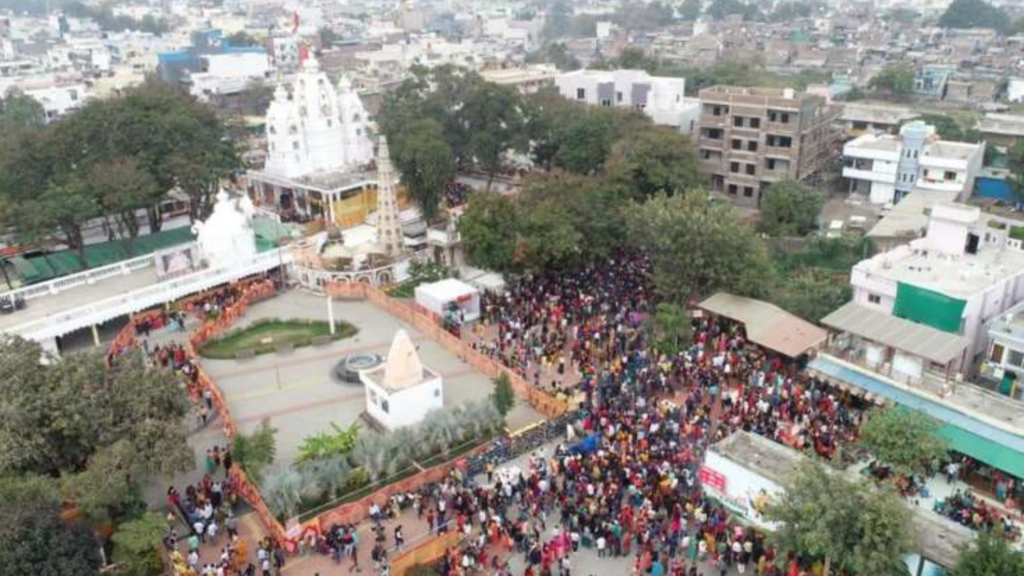
Ornate Gopurams: In some cases, the Mandir complex may have a large entrance gate or gopuram in addition to the main Mandir structure. These gopurams are towering structures adorned with colorful sculptures and carvings, serving as architectural focal points and welcoming visitors to the Mandir.
Surrounding Courtyard: The Khajrana Mandir often includes a spacious courtyard surrounding the main temple structure. This area provides devotees with space for circumambulation (pradakshina) around the temple, as well as for congregational activities and gatherings during festivals and celebrations.
The architecture and design of the Khajrana Mandir reflect the rich cultural and artistic heritage of India. The intricate carvings, attention to detail, and sacred symbolism create a serene and spiritually uplifting atmosphere for devotees and visitors alike.
The Khajrana Mandir celebrates several festivals throughout the year, with a particular emphasis on the major Hindu festival dedicated to Lord Ganesha, Ganesh Chaturthi. Here are some of the prominent festivals celebrated at the Khajrana Mandir:
Ganesh Chaturthi: Ganesh Chaturthi is the most significant festival celebrated at the Khajrana Mandir. It marks the birthday of Lord Ganesha and is observed with great enthusiasm and devotion. The temple premises are adorned with colorful decorations, flowers, and lights.
Elaborate rituals, including special prayers, hymns, and offerings, are performed. Devotees throng the temple to seek the blessings of Lord Ganesha during this festival, which typically falls between August and September.
Diwali: Diwali, also known as the Festival of Lights, is another important festival celebrated at the Khajrana Mandir. The temple is illuminated with numerous lights and oil lamps, creating a beautiful ambiance. Devotees offer prayers and seek the blessings of Lord Ganesha for prosperity and well-being during this auspicious festival.
Navaratri: Navaratri, meaning “nine nights,” is a festival dedicated to the worship of the Goddess Durga and her various forms. The Khajrana Mandir also celebrates Navaratri with devotion and enthusiasm. Special rituals, recitations of sacred texts, and musical performances take place during this festival. Devotees visit the temple to seek the blessings of the Goddess and participate in the cultural programs.
Holi: Holi, known as the Festival of Colors, is celebrated with joy and merriment at the Khajrana Mandir, Devotees gather to play with vibrant colors, sing devotional songs, and offer prayers to Lord Ganesha. It is a time of celebration and spreading happiness.
These are some of the major festivals celebrated at the Khajrana Mandir. The temple authorities organize various religious and cultural events to mark these occasions, attracting a large number of devotees and visitors who come to seek blessings and participate in the festivities.
Mythological Legends and Stories
The Khajrana Mandir is associated with several mythological legends and stories that add to its significance and appeal. While specific legends may vary based on local beliefs and traditions, here are a couple of popular mythological narratives connected to the temple:
Legend of Ahilya and Lord Ganesha: According to a mythological tale, there was a devout woman named Ahilya who resided in the vicinity of the Khajrana area. She ardently worshipped Lord Ganesha and was known for her unwavering devotion.
Impressed by her sincere prayers and piety, Lord Ganesha appeared before Ahilya and blessed her. It is believed that the Khajrana Mandir stands at the spot where Ahilya received the divine blessings of Lord Ganesha. This legend emphasizes the power of devotion and the fulfillment of desires through unwavering faith.
Miraculous Discovery of the Idol: Another popular legend associated with the Khajrana Mandir revolves around the discovery of the Ganesha idol that is now enshrined in the temple. The story goes that a cowherd named Gangabai found the idol submerged in the ground while grazing her cows. Astonished by the discovery, she immediately informed the local residents,
Religious Practices and Rituals
The Khajrana Mandir is a place of religious significance for devotees of Lord Ganesha, and various religious practices and rituals are observed within its premises. Here are some of the common religious practices and rituals followed at the Khajrana Mandir:
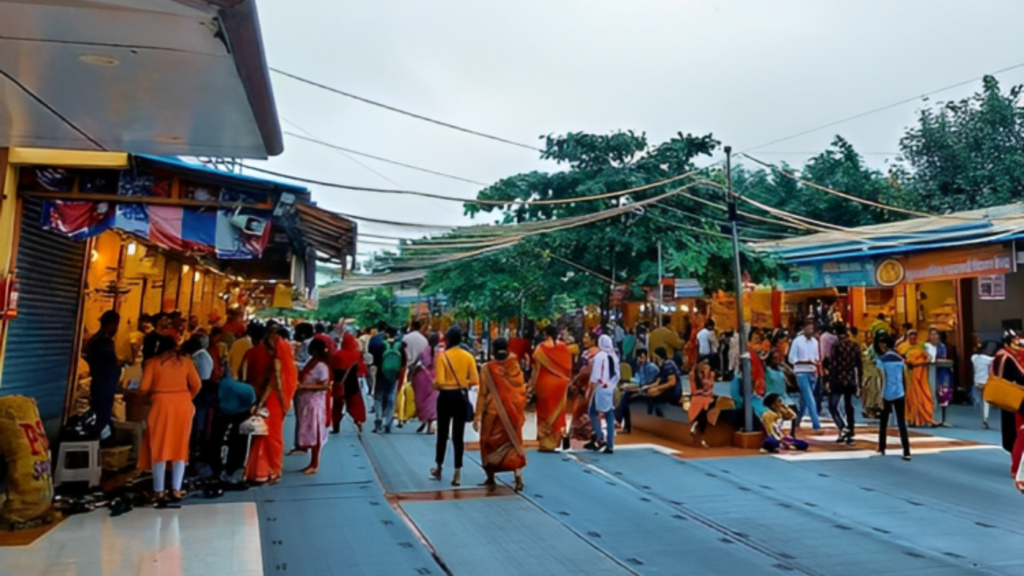
| Religious Practices and Rituals | Description |
| Darshan | Devotees visit the temple to have a glimpse of the idol of Lord Ganesha and seek his blessings. |
| Prayers and Aarti | Devotees offer prayers and perform aarti, a ritual of waving lighted lamps, to Lord Ganesha. |
| Offerings | Devotees make various offerings such as flowers, fruits, coconuts, sweets, and incense to the deity. |
| Abhishekam | The idol of Lord Ganesha is bathed with water, milk, honey, and other sacred substances as an offering. |
| Bhajans and Kirtans | Devotional songs and hymns praising Lord Ganesha are sung by devotees, creating a devotional atmosphere. |
| Fast Observance | Devotees may observe fasts, particularly on Tuesdays, as a form of devotion and seeking divine blessings. |
| Circumambulation (Pradakshina) | Devotees perform circumambulation, walking in a clockwise direction around the sanctum, as a form of reverence. |
| Festival Celebrations | Various festivals like Ganesh Chaturthi, Diwali, and Navaratri are celebrated with special rituals and festivities. |
| Poojas and Homas | Elaborate rituals, including poojas (worship ceremonies) and homas (fire rituals), are conducted on auspicious occasions. |
| Reading and Recitation of Scriptures | Devotees may engage in the reading and recitation of sacred texts, such as the Ganapati Atharvashirsha or Ganapati Upanishad. |
World’s Most Expensive Prasad Shop
Surprising real estate businessmen, a shop in the auction of the Prasad shop set up in the premises of Khajrana Ganesh Temple in Indore has fetched an astonishing price, making it the world’s most expensive Prasad shop. In October 2022, the Indore Development Authority (IDA) issued a tender for the shops in Khajrana Ganesh Temple.

Among the many tenders received, the bid for the 70 square feet Prasad shop reached a staggering amount of Rs 1.72 crore (approximately). The owner of the shop, Deepak Rathod, expressed gratitude to Lord Shri Ganesh, attributing the success to divine blessings.
Having run the Prasad shop for 25-30 years, Rathod aims to utilize the money for the development and offerings within the Lord Ganesh temple complex.
Currently, there are approximately 60 Prasad shops operating on the temple premises. Rathod intends to provide a variety of laddoos, including urad and moong laddoos, as well as modaks made with desi ghee, to the devotees.
The trader has been given a month’s time to deposit the tender amount, which will be transferred to the Khajrana Ganesh Management Committee for the temple’s further development and management. Source
How To Book VIP Darshan
For visitors seeking a VIP darshan (special entry) at the Khajrana Mandir in Indore, there are usually specific arrangements in place to provide a more convenient and expedited experience. Here are some general guidelines for a VIP darshan:
Prior Appointment: It is advisable to contact the temple authorities in advance or check their official website to inquire about VIP darshan facilities and procedures. Some temples have dedicated VIP entry systems or special time slots for VIP darshan.
VIP Pass or Ticket: Depending on the temple’s policies, you may need to obtain a VIP pass or ticket for the darshan. These passes can often be obtained from designated counters or online booking platforms. The cost and availability of VIP passes may vary.
Separate Entry Gate: Many temples have a separate entry gate for VIP darshan. Upon arrival, follow the instructions and signage to locate the VIP entry point. Security personnel or temple staff will guide you through the process.
Security Checks: Just like regular visitors, VIP darshan attendees may still need to undergo security checks for the safety and security of all devotees. Cooperate with the security personnel and follow their instructions during the screening process.
Queue Management: VIP darshan typically involves a separate queue or pathway, allowing for a quicker and more streamlined entry into the main temple area. Follow the directions of the temple staff and maintain decorum while waiting for your turn.
Darshan Rituals: Once inside the temple, follow the prescribed rituals and customs for darshan. It is customary to offer prayers, make offerings, and seek blessings from the deity. Be respectful of the temple environment and the sentiments of fellow devotees.
It’s important to note that the availability and specific procedures for VIP darshan can vary from temple to temple. It is recommended to check with the Khajrana Mandir authorities or their official channels for the most accurate and up-to-date information regarding VIP darshan facilities, booking, and guidelines.
Nearby Attractions and Tourist Information
The Khajrana Mandir is located in Indore, Madhya Pradesh, India. Apart from visiting the Mandir, there are several nearby attractions and places of interest that tourists can explore. Here are some notable attractions in the vicinity of the Khajrana Mandir:
Lal Bagh Palace: Situated around 6 kilometers from the Khajrana Mandir, Lal Bagh Palace is a magnificent royal palace built during the Holkar dynasty. The palace exhibits a blend of European and Indian architectural styles and houses a museum displaying artifacts, artwork, and memorabilia from the era.
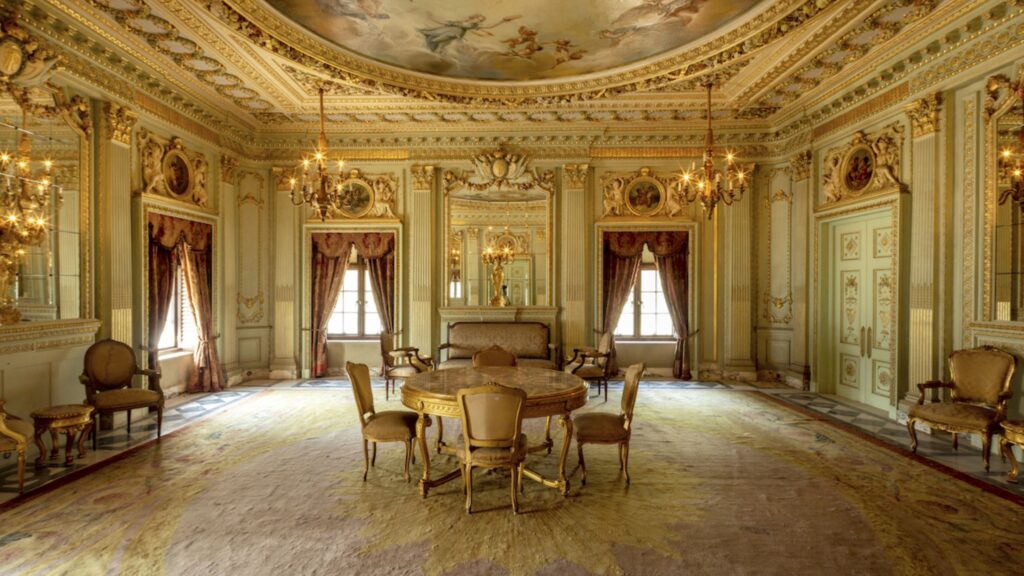
Rajwada: Located approximately 7 kilometers from the Khajrana Mandir, Rajwada is a historic palace and a significant landmark in Indore. It showcases a mix of Maratha, Mughal, and French architectural influences and serves as a testament to the city’s rich cultural heritage.
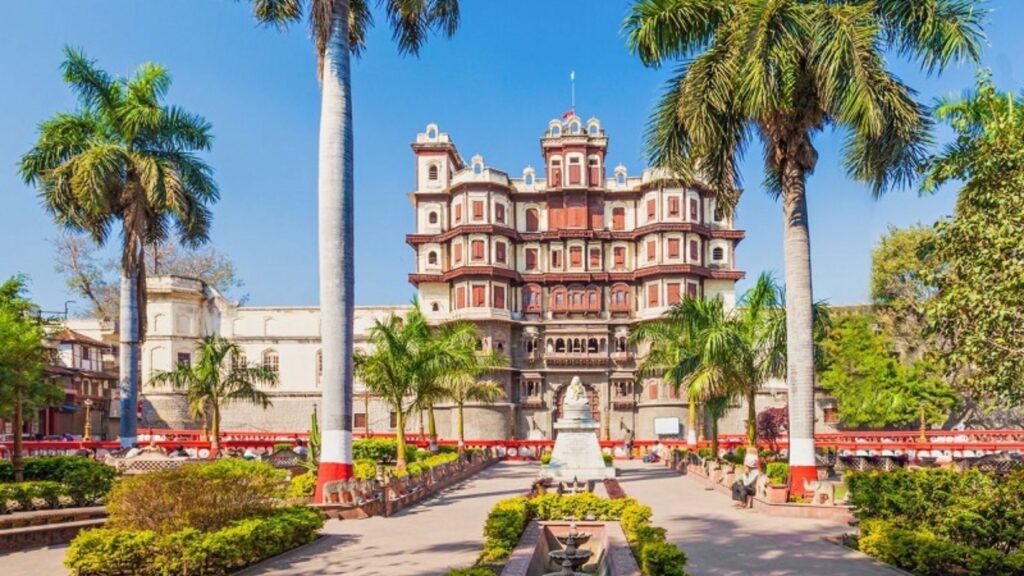
Central Museum (Indore Museum): Situated around 6 kilometers from the temple, the Central Museum is a renowned museum housing a diverse collection of artifacts, sculptures, paintings, and historical relics from various periods, including the prehistoric and medieval eras.
Annapurna Mandir: About 8 kilometers away from Khajrana Mandir, the Annapurna Mandir is dedicated to Goddess Annapurna, who is believed to be the bestower of food and nourishment. The temple’s architecture and spiritual ambiance attract devotees and visitors alike.
Patalpani Waterfall: Located approximately 35 kilometers from the temple, Patalpani Waterfall is a scenic natural attraction. It offers a picturesque view and is particularly captivating during the monsoon season when the water cascades down from a height of 150 feet.
Sarafa Bazaar: Situated around 8 kilometers from the temple, Sarafa Bazaar is a vibrant night market known for its delicious street food. Visitors can explore a wide array of local culinary delights, including Indore’s popular snacks and sweets.
Chokhi Dhani: Located about 25 kilometers from the temple, Chokhi Dhani is a cultural village that provides a glimpse into traditional Rajasthani culture. Visitors can enjoy folk performances, camel rides, traditional Rajasthani cuisine, and various cultural activities.
These attractions offer a mix of historical, cultural, and natural experiences for tourists visiting the Khajrana Mandir and Indore. They provide an opportunity to delve deeper into the region’s heritage, art, and culinary delights, enhancing the overall travel experience.
Reaching the Khajrana Mandirin Indore, Madhya Pradesh, India, is relatively convenient as it is well-connected by various modes of transportation. Here are the ways to reach the temple:
How to Reach Khajrana Ganesh Mandir
| Mode of Transportation | Description | Distance from Khajrana Mandir |
|---|---|---|
| By Air | Nearest airport: Devi Ahilya Bai Holkar Airport in Indore which is well connected to major cities in India. Hire a taxi or take a cab from the airport to reach the temple | Approximately 13 kilometers |
| By Train | Main railway station: Indore Junction which is well connected to major cities across India. Hire a taxi, or auto-rickshaw, or take a local bus from the railway station to reach the temple | Approximately 5 kilometers |
| By Road | Well-developed road networks can reach Indore by state-run buses, private buses, or by hiring a taxi or cab from nearby cities and towns. Once in Indore, use local transportation options like buses, auto-rickshaws, or taxis to reach Khajrana Mandir. | Approximately 5 kilometers from the city center |
Khajrana Ganesh Mandir (Temple) Distance From Various Landmarks In Indore
| Landmark In Indore | Distance (KM) Approx. From Khajrana Temple |
|---|---|
| Rajwada Palace | 5.67 KM |
| C21 Mall | 2.05 KM |
| Treasure Island Mall | 3.25 KM |
| Sayaji Hotel Indore | 2.98 KM |
| Kamla Nehru Prani Sangrahalaya, Indore | 4.33 KM |
| Malhar Mega Mall | 2.07 KM |
| Radisson Blu Hotel Indore | 2.18 KM |
| PVR Indore | 3.19 KM |
| Sarafa Night Food Market | 5.99 KM |
| Dutt Gurukripa Restaurant | 3.48 KM |
| Annapurna Temple | 8.55 KM |
| Nakhrali Dhani Resort & Marriage Garden | 15.28 KM |
| Shri Ranjeet Hanuman Mandir | 8.17 KM |
| Indore Junction | 4.39 KM |
| Indore Railway Station, Platform No. 5-6 | 4.12 KM |
Local Transportation:
Within Indore, you can use various local transportation options to reach the Khajrana Mandir. Auto-rickshaws and taxis are readily available and can take you directly to the temple. Additionally, you can use local bus services to reach the temple, as there are bus stops in the vicinity.
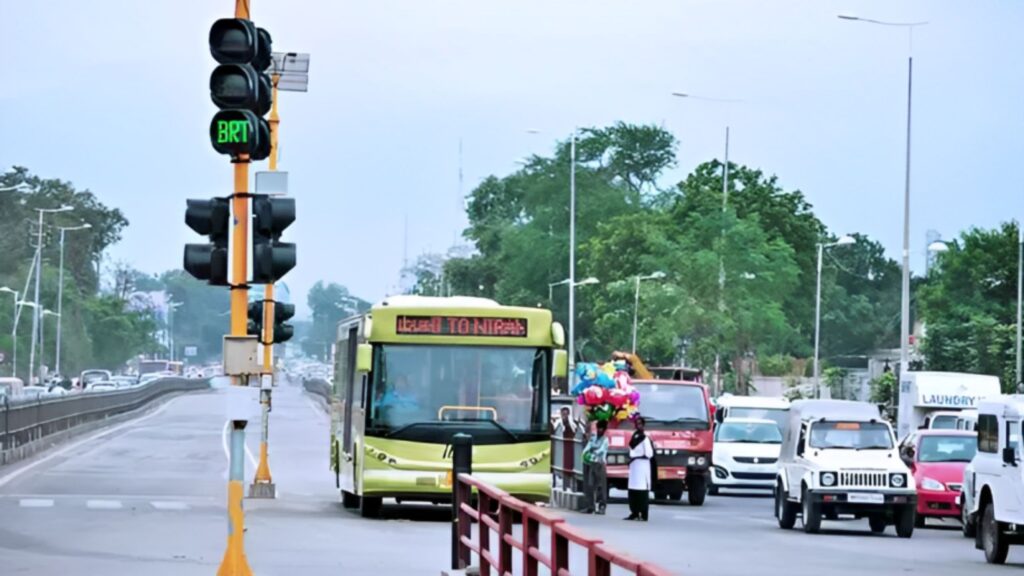
It’s advisable to check the current transportation schedules and availability, especially if you are traveling during peak seasons or festivals. Indore’s local transportation facilities are generally efficient, and the Khajrana Mandir is a popular landmark, making it easy to find transportation options to reach the temple.
Best Time to Visit Khajrana Mandir
| Month | Weather | Reason to Visit |
| October-March | Pleasant and Cool | Mild temperatures make it comfortable for temple visits. |
| Festivals like Diwali and Navratri are celebrated. | ||
| Clear skies offer good visibility and a pleasant ambiance. | ||
| April-June | Hot and Dry | Devotees can visit during off-peak tourist season. |
| Experience the temple’s serene atmosphere with fewer crowds. | ||
| Early mornings and evenings offer relatively cooler temperatures. | ||
| July-September | Monsoon Season | The surrounding landscape becomes lush and green. |
| Witness the beauty of the temple during rain showers. | ||
| Fewer crowds compared to peak tourist seasons. |
Please note that these are general guidelines, and actual weather conditions may vary each year. It’s always a good idea to check the current weather forecast and plan your visit accordingly. Additionally, festivals and events celebrated at the temple may also influence the best time to visit, depending on personal preferences.
Accommodation Options
When visiting the Khajrana Mandir in Indore, there are several accommodation options available to suit different budgets and preferences. Here are some well-structured options:
Luxury Hotels and Resorts:
- Radisson Blu Hotel Indore
- Sayaji Hotel Indore
- Marriott Indore Hotel
- Fortune Landmark Hotel
- The Grand Bhagwati Palace
Mid-Range Hotels:
- Hotel Crown Palace
- Hotel Amar Vilas
- Hotel President
- Hotel Apna Palace
- Hotel Siddhant
Budget Hotels and Guesthouses:
- Hotel Winway
- Hotel Shreemaya Residency
- Hotel Surya
- Hotel Balwas International
- Hotel Apna Avenue
Homestays and Guesthouses:
- Tathastu Homestay
- Maa Ahilya Guest House
- Princes’ Palace Homestay
- Sai Shubham Homestay
- Anandam Home Stay
Online Rental Platforms:
- Airbnb
- Booking.com
- MakeMyTrip
- OYO Rooms
It’s advisable to book your accommodation in advance, especially during peak tourist seasons or festivals, to secure your preferred option. Indore offers a wide range of accommodation choices to cater to different budgets and provide a comfortable stay for visitors exploring the Khajrana Mandir and other attractions in the city.
Safety Tips for Visitors At Khajrana Ganesh Mandir
When visiting the Khajrana Mandir and exploring Indore, it’s essential to prioritize your safety and well-being. Here are some safety tips to keep in mind:
- Stay alert and aware of your surroundings at all times. Be cautious of pickpockets or any suspicious activities in crowded areas.
- Keep your personal belongings secure. Use a secure bag or backpack to carry your valuables and keep them close to you. Avoid displaying expensive items or wearing excessive jewelry that may attract unnecessary attention.
- Follow the temple’s rules and guidelines. Respect the customs and traditions of the temple and adhere to any instructions provided by the temple authorities.
- Dress appropriately when visiting religious sites. It is recommended to wear modest clothing that covers your shoulders and knees as a sign of respect.
- Use reliable transportation options. Choose registered taxis, cabs, or well-known transportation services. If using public transportation, be cautious of your belongings and avoid traveling alone late at night.
- Stay hydrated and carry drinking water with you, especially during hot weather. Also, carry some snacks in case you need them during your visit.
- Be cautious when consuming street food. Ensure that the food is prepared in hygienic conditions, and opt for well-established food vendors with good reviews.
- Stay updated on the local weather conditions and any travel advisories. Plan your visit accordingly, taking into account any potential weather-related challenges.
- In case of an emergency, be aware of the nearest hospitals, police stations, and emergency contact numbers. Keep important contact information handy.
- Travel with a companion whenever possible, especially during late hours or in unfamiliar areas.
Remember, these safety tips are general guidelines, and it’s essential to use your discretion and make informed decisions while ensuring your personal safety throughout your visit.
Local Cuisine and Food Options
Indore, the city where the Khajrana Mandir is located, is renowned for its vibrant food culture and delicious local cuisine. Here are some popular local dishes and food options to try during your visit:
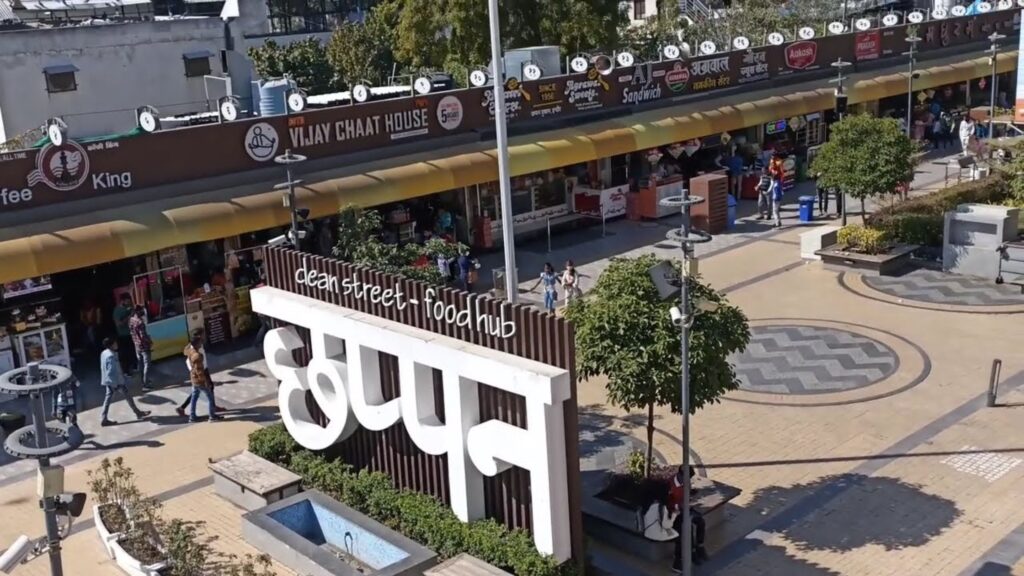
| Dish | Description |
| Poha | Flattened rice cooked with onions, mustard seeds, curry leaves, and spices. Served with sev (crunchy chickpea noodles) and garnished with coriander and lemon. |
| Bhutte Ka Kees | A savory dish made from grated corn kernels cooked with spices, turmeric, and garnished with coriander. It has a creamy and slightly sweet taste. |
| Indori Sev | Spicy and crispy noodles made from chickpea flour are often used as a topping for various dishes or enjoyed as a snack on their own. |
| Kachori | Deep-fried pastry filled with a spicy mixture of lentils or potatoes. Served with tangy tamarind chutney and green chutney. |
| Daal Bafla | Wheat dough balls are boiled and then baked, served with piping hot lentil curry (daal), ghee, and a side of chutney. |
| Malpua | Sweet pancakes made from a batter of flour, milk, and semolina, deep-fried and then soaked in sugar syrup. Served with rabri (thickened sweetened milk) or rabdi. |
| Jalebi | Deep-fried spiral-shaped sweet made from fermented batter, soaked in sugar syrup, and enjoyed crispy and syrupy. |
| Korma and Biryani | Rich and aromatic meat or vegetable curries (korma) and flavorful rice dish (biryani) cooked with fragrant spices and garnished with fried onions and nuts. |
| Moong Bhajiya | Fritters made from split yellow lentils (moong dal) mixed with spices, deep-fried to perfection, and served hot with green chutney. |
| Rabri | A sweet dish made from condensed milk, simmered for hours until thick and creamy. It is often enjoyed as a dessert or served with malpua. |
Souvenirs and Shopping
When visiting Indore and the Khajrana Mandir, you’ll find a variety of souvenirs and shopping options that allow you to take a piece of the city’s culture and craftsmanship back home. Here are some popular souvenirs and shopping items to consider:
Maheshwari and Chanderi Silk Sarees: Indore is known for its traditional handloom sarees, particularly the exquisite Maheshwari and Chanderi silk sarees. These sarees feature beautiful weaving patterns, vibrant colors, and are highly prized for their craftsmanship.
Handicrafts and Artifacts: Explore the local markets and shops to find a wide range of handicrafts and artifacts that reflect the rich cultural heritage of Indore. Look for items like wooden carvings, metalwork, pottery, and embroidered textiles.

Jewelry: Indore offers a selection of traditional jewelry pieces, including silver ornaments, Kundan and Polki jewelry, and intricate gold designs. These pieces showcase the city’s craftsmanship and are perfect for adding a touch of elegance to your collection.
Handicraft Bags and Accessories: Look for handmade bags, wallets, and accessories crafted by local artisans. These items often feature traditional embroidery work, beadwork, and mirror work, making them unique and stylish.
Indore’s Special Snacks and Spices: Indore is famous for its lip-smacking snacks like namkeens, sev, and bhujia. These savory delights make for tasty souvenirs and can be found in various local markets. Additionally, you can also explore the city’s spice markets to purchase aromatic spices and blends.
Traditional Artwork and Paintings: Indore is home to many talented artists, and you can find beautiful artwork and paintings that depict local culture, heritage, and landscapes. Look for Madhubani paintings, miniature art, and tribal artwork to adorn your walls or as unique gifts.
Traditional Garments and Kurtas: You can shop for traditional garments like lehengas, salwar suits, and kurtas adorned with exquisite embroidery or block prints. These garments are perfect for showcasing local textile traditions.
Handmade Home Decor Items: Explore the markets for handmade home decor items like wall hangings, sculptures, decorative mirrors, and pottery. These items can add a touch of Indore’s artistic flair to your living spaces.
Remember to explore local markets and shops in Indore, such as Sarafa Bazaar, Khajuri Bazaar, and Topkhana, to find a wide range of souvenirs and shopping options. Bargaining is common in these markets, so feel free to negotiate for the best prices.
Conclusion
In conclusion, the Khajrana Mandir in Indore, Madhya Pradesh, is a significant place of worship and holds historical and religious importance. It attracts devotees and tourists from various parts of the country. The temple’s architecture, dedicated deity, and spiritual ambiance make it a revered site for seeking blessings and finding solace.
The temple is associated with several mythological legends and stories, further adding to its allure. Festivals like Navratri and Hanuman Jayanti are celebrated with great enthusiasm, offering a glimpse into the vibrant culture and traditions of the region.
Visitors can enjoy exploring nearby attractions such as Lal Bagh Palace, Rajwada, and the Central Museum, which provide insights into Indore’s rich history and architectural heritage. The city offers a range of accommodation options, from luxury hotels to budget guesthouses, ensuring a comfortable stay for every visitor.
Indore’s local cuisine is a treat for food lovers, with popular dishes like poha, kachori, and jalebi showcasing the city’s culinary delights. Shopping enthusiasts can indulge in purchasing traditional sarees, handicrafts, jewelry, and local snacks as souvenirs.
While visiting the Khajrana Mandir and exploring Indore, it’s important to prioritize safety and adhere to general safety guidelines. Being respectful of the temple’s customs and traditions, dressing modestly, and staying aware of your surroundings are key factors to ensure a pleasant and secure experience.
Overall, a visit to the Khajrana Mandir and Indore offers a blend of spirituality, history, culture, and culinary delights, making it a memorable destination for all. Explore more Interesting Destinations.
FAQs About Khajrana Mandir
1. Is photography allowed inside the temple?
Yes, photography is permitted within the temple premises. However, it is advisable to seek permission from the authorities and respect any specific guidelines.
2. Are there any restrictions on the dress code for visitors?
There are no strict dress code requirements for visitors. However, it is recommended to dress modestly and respectfully while visiting the temple, keeping in mind the religious significance of the place.
3. Can non-Hindus visit Khajarana Mandir?
Yes, Khajarana Temple welcomes visitors of all religions and backgrounds. It is a place of spiritual significance and cultural heritage, open to anyone seeking solace and divine blessings.
4. Are there any accommodation options within the temple premises?
No, there are no accommodation facilities within the temple premises. However, there are several hotels and guesthouses available in the vicinity for visitors to choose from.
5. Can I participate in the temple rituals and ceremonies?
Yes, visitors are welcome to participate in the temple rituals and ceremonies. The priests will guide and assist you throughout the process, ensuring a meaningful and memorable experience.
6. What is the distance between Khajrana Ganesh Temple and Indore Railway Station?
The distance between Khajrana Ganesh Temple and Indore Railway Station is approximately 4.12 KM.
7. How far is Khajrana Ganesh Temple from the nearest railway junction?
Khajrana Ganesh Temple is located approximately 4.39 KM away from the nearest railway junction, Indore Junction.

